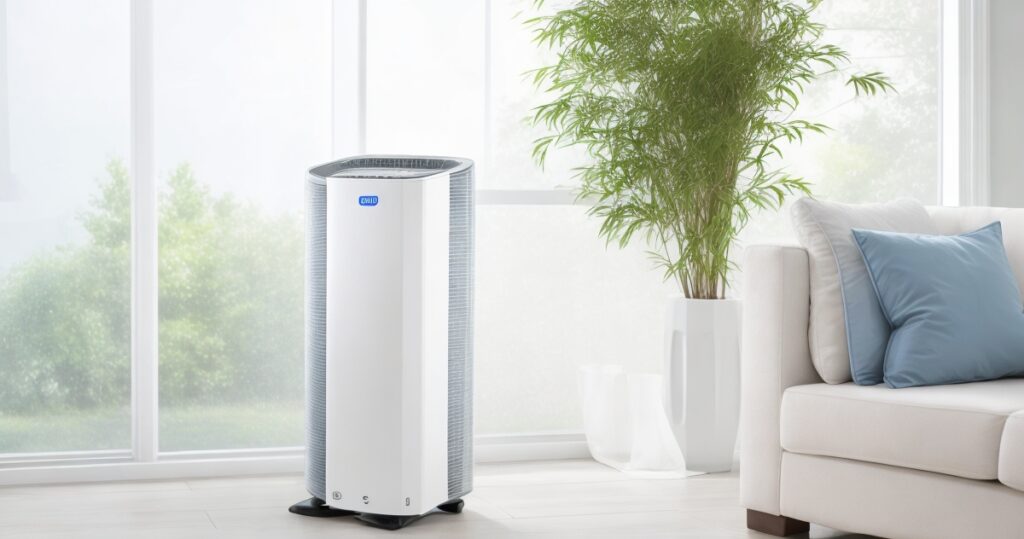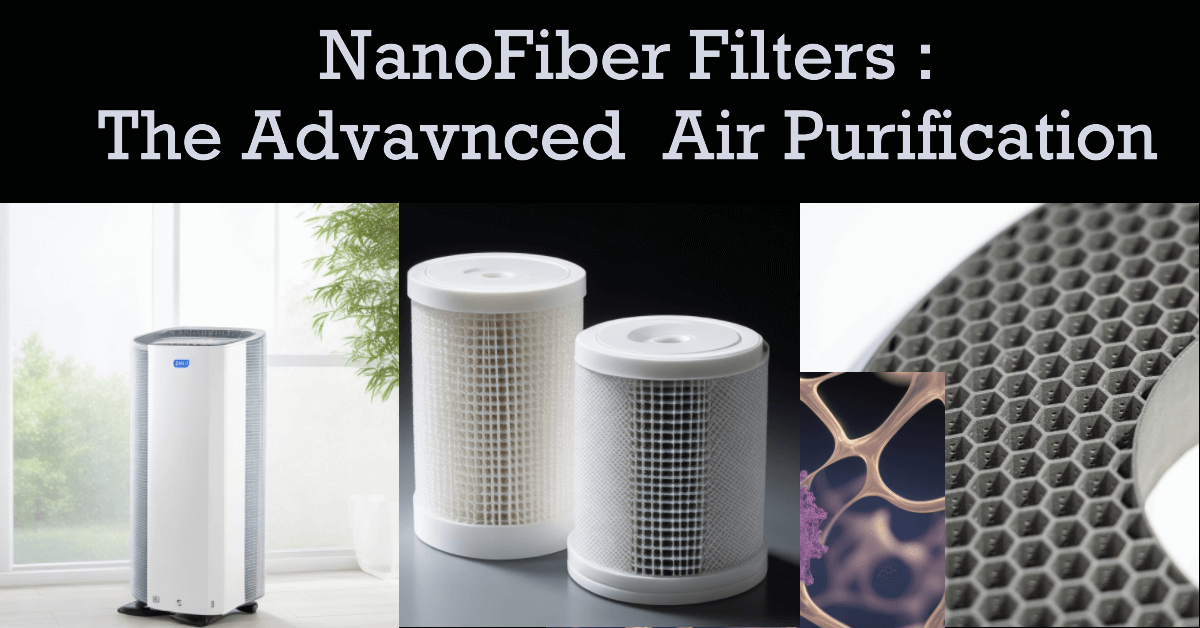Nanofiber Filters are offering a cutting-edge solution to the ever-pressing need for cleaner indoor air. These remarkable filters, designed to trap particles down to the nanoscale, have found their niche in a wide array of applications, making them a game-changer in filtration technology.
Nanofiber Filters, as the name suggests, harness the power of nano technology to capture minuscule particles that conventional filters often miss. Their extraordinary filtration capabilities are a result of their ultra-fine fibers, thousands of times thinner than a human hair, which provide a vast surface area for particle capture. This technology has opened the door to a new era of air purification, where particles as small as 0.01 microns are effectively removed from the air we breathe.
Beyond their exceptional filtration efficiency, Nano Fiber Filters Filters are prized for their longevity and cost-effectiveness. These filters are engineered to continuous use, requiring minimal maintenance and resulting in long-term savings for consumers. Their energy efficiency, compared to some traditional filtration methods, makes them a sustainable choice while significantly reducing the environmental impact of air purification systems.
Introduction
Nanofiber filters are a revolutionary technology that plays a vital role in various applications, with a significant impact on air purification systems. These filters are designed to remove particulate matter and pollutants from the air, ensuring that the air we breathe is clean and safe.
What is a Nanofiber Filter?
A nanofiber filter is a type of air filtration technology that utilizes nanoscale fibers to capture and remove particles from the air. These filters are designed to be highly efficient at trapping a wide range of contaminants, including dust, allergens, bacteria, viruses, and even ultrafine particles such as PM2.5 and PM0.1. Nanofiber filters are used in various applications, from air purifiers and HVAC systems to protective masks and industrial filtration.

How does nanofiber work?
Nanofiber filters work through a combination of mechanical and electrostatic filtration mechanisms. The extremely small diameter of the nanofibers, typically in the range of 100-500 nanometers, creates a dense web of fibers with a high surface area. When air passes through the filter, several processes come into play:
- Mechanical Filtration: The fine nanofibers physically block and trap larger particles as they pass through the filter. The intricate network of nanofibers creates a labyrinthine path for air, which increases the chances of particle interception.
- Electrostatic Attraction: Nanofibers often carry an electrostatic charge due to the manufacturing process. This charge can attract particles with opposite charges, enhancing filtration efficiency. Electrostatic attraction is particularly effective for capturing smaller particles and even some viruses.
- Diffusion: For ultrafine particles, Brownian motion causes them to collide with nanofibers, leading to their capture.
The combination of these mechanisms makes Nano Fiber Filters highly efficient in removing contaminants from the air, offering superior filtration performance compared to traditional filter materials.

Types of Nanofiber Filters
Nanofiber filters owe their effectiveness to a fascinating technology known as electrospinning. This process involves creating ultra-fine fibers that are thousands of times thinner than a human hair. These fibers are then used to construct filters with an incredibly high surface area, making them ideal for capturing even the smallest particles in the air.
When compared to traditional filtration methods, nanofiber filters stand out due to their exceptional efficiency. Let’s take a closer look at the various types of Nano Fiber Filters and how they are classified based on the materials used in their production:
| Type of Nanofiber Filter | Materials Used |
|---|---|
| Electrospun Nanofiber Filters | Polymer-based materials, such as polyethylene, polypropylene, and more |
| Composite Nanofiber Filters | Combination of polymer nanofibers and other materials like activated carbon or metal oxides |
| Bio-Based Nanofiber Filters | Nanofibers derived from natural sources like cellulose or silk |

Nanofiber Filters in Air Purifiers
Nanofiber filters have found their sweet spot in air purifiers, where they deliver exceptional performance in removing airborne contaminants. Their effectiveness in capturing particles down to the nanoscale makes them a preferred choice for air purification.
| Characteristic | Nanofiber Filters | Other Filters |
|---|---|---|
| Filtration Efficiency | Highly efficient due to the small size of nanofibers | Efficiency varies depending on filter type |
| Longevity | Durable with a long lifespan | Lifespan varies based on the filter material |
| Energy Efficiency | Low energy consumption | May consume more energy |
Nano Fiber Filters Filtration Efficiency
The heart of nanofiber filters lies in their exceptional filtration efficiency. They are designed to capture a wide range of pollutants, including dust, allergens, bacteria, and even viruses. The small size of nanofibers provides a large surface area for particle capture, making them highly effective in removing different pollutants. Their ability to filter particles down to the nanoscale is unmatched by other filtration methods, ensuring that the air you breathe is of the highest quality.
Particle size plays a crucial role in filtration efficiency. Nanofiber filters excel in capturing particles as small as 0.01 microns, which is several times smaller than the diameter of a human hair. This is a significant advantage when compared to standard filters that may not be as effective at trapping these tiny particles.
Additionally, the electrospinning process allows for precise control over the porosity of the filter, enabling customization for specific applications. This flexibility ensures that nanofiber filters can be tailored to address the filtration needs of various environments, from homes and hospitals to industrial facilities.
| Particle Size | Filtration Efficiency |
|---|---|
| 0.1 microns | Over 99% efficiency |
| 0.01 microns | Exceptional efficiency in capturing even smaller particles |
| Customizable Porosity | Adaptable for various filtration requirements |

Longevity and Maintenance
Nanofiber filters are known for their durability and long lifespan, making them a cost-effective choice in the long run. These filters are designed to withstand the rigors of continuous air purification without significantly degrading in performance. While other filters may require frequent replacement, nanofiber filters can last much longer, reducing the overall maintenance costs of your air purifier.
Maintenance requirements for nanofiber filters are minimal. Regular cleaning and occasional replacement of pre-filters or activated carbon layers are typically all that’s needed to keep the air purifier running optimally. This ease of maintenance ensures that your air purifier with a Nano Fiber Filters remains efficient and effective for an extended period.
Not only do nanofiber filters offer cost savings, but they also contribute to a more eco-friendly approach to air purification. Their extended lifespan means fewer filters end up in landfills, reducing environmental impact. This longevity and reduced waste align with the growing emphasis on sustainability and responsible consumption.
| Filter Lifespan | Maintenance Requirements | Environmental Impact |
|---|---|---|
| Extended lifespan | Minimal maintenance | Reduced waste and environmental impact |
Energy Efficiency
Energy efficiency is a critical factor when evaluating air purifiers. Nanofiber filters are known for their low energy consumption, which is a significant advantage over some traditional filtration methods. Air purifiers equipped with nanofiber filters can efficiently clean the air without significantly affecting your energy bills.
In contrast, certain other filters , especially those with high-resistance designs, may require more energy to push air through the filter media. This can result in higher operating costs and increased energy consumption. Nanofiber filters’ low resistance ensures that the air purifier works efficiently without overburdening your electricity usage.
When choosing an air purifier, considering its energy efficiency can lead to long-term savings and reduced environmental impact.
| Energy Consumption | Operating Costs | Environmental Impact |
|---|---|---|
| Low energy consumption | Reduced operating costs | Lower carbon footprint |
Other Applications of Nanofiber Filters
The versatility of nanofiber filters extends to a wide range of applications, making them indispensable in various industries. Let’s explore some of the key applications:
- Air Filtration in HVAC Systems: Nanofiber filters are used in heating, ventilation, and air conditioning (HVAC) systems to ensure that the air circulated in buildings is clean and free from pollutants.
- Water Purification and Treatment: Nanofiber filters are employed in water treatment processes to remove contaminants, ensuring access to safe and clean drinking water.
- Medical Applications in Surgical Masks and Respirators: Nanofiber filters are integrated into surgical masks and respirators to provide healthcare professionals with effective protection against airborne pathogens.
Moreover, nanofiber filters find applications in industrial settings, such as chemical processing, where maintaining air quality is critical for worker safety. Additionally, they play a vital role in environmental pollution control, helping to reduce air pollution and its adverse effects on public health.
Health Benefits
Nanofiber filters are champions when it comes to improving indoor air quality, which has a direct impact on human health.
For individuals with respiratory conditions such as allergies or asthma, clean indoor air can make a world of difference. Nanofiber filters excel in capturing allergens, dust, and other airborne particles that can trigger respiratory problems. With these filters in place, individuals with sensitivities to air pollutants can experience relief and improved quality of life.
Furthermore, in medical settings, nanofiber filters offer protection against harmful pathogens, including viruses. Healthcare professionals rely on the filtration capabilities of nanofiber filters in their masks and respirators to safeguard themselves and their patients from infectious diseases. These filters act as an additional line of defense, enhancing infection control measures.
| Improved Indoor Air Quality | Relief for Respiratory Conditions | Protection Against Pathogens |
|---|---|---|
| Enhanced well-being | Relief from allergies and asthma | Reduced risk of infection |
Technological Advancements
The field of nanofiber filter technology is dynamic, with ongoing research and development leading to exciting innovations. Researchers and engineers are continually exploring ways to improve nanofiber filters, expanding their potential applications and performance.
One notable area of advancement is in creating composite nanofiber air filters. These filters combine the benefits of polymer nanofibers with other materials like activated carbon or metal oxides. This synergy enhances their ability to capture specific pollutants, such as volatile organic compounds (VOCs) or odors, making them more versatile in addressing a broader range of air quality challenges.
Market Trends
The market for air purifiers equipped with nanofiber filters is on the rise, driven by an increasing awareness of the importance of clean indoor air.
Consumer preferences are shifting towards more sustainable and eco-friendly products, aligning with the longevity and reduced waste associated with nanofiber air filters. This growing market trend underscores the significance of clean indoor air in the modern world.
Cost Considerations
When considering an air purifier with nanofiber filters, it’s essential to evaluate the cost. While the initial price may be higher than some alternatives, the long-term cost-effectiveness and benefits outweigh the investment.
The price range for air purifiers with nanofiber air filters can vary based on factors such as brand, features, and filter technology. However, it’s essential to keep in mind that the extended lifespan and reduced maintenance requirements of these can result in savings over time. Additionally, the improved air quality they provide can contribute to a healthier and more comfortable living environment.
| Initial Cost vs. Long-Term Savings | Price Range for Air Purifiers | Factors Affecting Cost |
|---|---|---|
| Long-term cost-effectiveness | Varies based on brand and features | Size, capacity,and additional technology features |
Limitations and Challenges
It’s essential to understand the scenarios in which nanofiber air filters may not be the ideal choice and be aware of potential drawbacks:
- High Initial Cost: The upfront cost of these air purifiers may be higher than some alternatives, which can deter budget-conscious consumers.
- Scaling Production: As demand for nanofiber air filters grows, manufacturers may face challenges in scaling up production to meet market needs.
- Specific Applications: While nanofiber air filters excel in air purification, there may be specific scenarios where other filtration methods are more suitable due to their unique requirements.
Conclusion
Nanofiber filters have emerged as a game-changer in the world of air purification. Their exceptional filtration efficiency, long lifespan, and energy efficiency make them a top choice for improving indoor air quality in homes, medical facilities, and industrial settings. With applications extending beyond air purifiers, nanofiber filters are transforming the way we approach air quality.
FAQ
What is the function of a nano filter?
The primary function of a nano filter is to remove and capture particles and contaminants from the air, fluids, or other substances with exceptional efficiency. Nano filters are designed to achieve this by using nanoscale fibers, which offer a large surface area and various mechanisms like mechanical filtration, electrostatic attraction, and diffusion to trap and retain particles. Nano filters are commonly used in air purification, water purification, industrial filtration, and other applications where the removal of microscopic contaminants is essential.
What are examples of nanofibers?
Nanofibers can be made from various materials. Some examples of materials used to create nanofibers include:
Polymer Nanofibers: Polymers such as polypropylene, polyethylene, polyurethane, and others are commonly used to produce nanofibers. These polymers are dissolved in a solvent and then electrospun to form nanofibers.
Biodegradable Materials: Some nanofibers are made from biodegradable polymers like polylactic acid (PLA) and cellulose acetate, which are more environmentally friendly.
Composite Nanofibers: Composite nanofibers can be created by combining different materials, such as a blend of polymer and ceramic nanofibers for enhanced filtration performance.
The choice of material depends on the specific application and the properties required for the nanofiber, such as filtration efficiency, chemical resistance, and biodegradability.
How does a fibrous filter work?
Fibrous filters, including nanofiber filters, operate through various mechanisms to remove particles from a fluid or air stream. These mechanisms include:
Mechanical Filtration: The physical structure of the fibrous filter, including the small gaps between fibers, acts as a barrier to block and trap particles as they pass through. Larger particles are directly intercepted by the fibers.
Electrostatic Attraction: Many fibrous filters, especially those incorporating nanofibers, can carry an electrostatic charge. This charge attracts particles with opposite charges, effectively capturing them. It is particularly useful for capturing smaller particles.
Diffusion: Ultrafine particles, influenced by Brownian motion, collide with fibers, leading to their capture as they move randomly through the filter.
Are nanofiber masks reusable?
Whether nanofiber masks are reusable or not depends on the specific design and intended usage. Some nanofiber masks are designed for single-use and should be disposed of after one wearing. These masks are often used in medical and healthcare settings to prevent the spread of infection.
However, there are also reusable nanofiber masks available in the market. These masks are typically made with washable and durable materials, and the nanofiber filter can be replaced or cleaned, allowing the mask to be used multiple times. Reusable nanofiber masks are popular for personal protection in environments with high levels of air pollution or when there is a need for long-term respiratory protection. Always follow the manufacturer’s instructions for cleaning and maintenance to ensure the effectiveness of reusable nanofiber masks.
What are nano filters for air pollution?
Nano filters for air pollution are specialized air filtration systems that use nanofiber filter media to effectively remove particulate pollutants from the air. These filters are designed to address air pollution concerns and improve air quality by capturing various contaminants, including dust, pollen, smoke, bacteria, viruses, and ultrafine particles like PM2.5. They are used in applications like air purifiers, HVAC systems, respiratory masks, and cleanrooms to reduce airborne pollutants.
What is nanofiber made of?
Nanofiber filters can be made from various materials, but some common examples include:
Polymer Nanofibers: Materials like polypropylene, polyethylene, polyurethane, and others are commonly used to create nanofibers. These polymers are typically dissolved in a solvent and then electrospun to form nanofibers.
Biodegradable Materials: In an effort to reduce environmental impact, some nanofiber filters are made from biodegradable polymers such as polylactic acid (PLA) or cellulose acetate.
Composite Nanofibers: Composite nanofibers can be produced by combining different materials to optimize filtration performance. For example, a nanofiber filter might consist of a blend of polymer and ceramic nanofibers.
DheerajSonwane is a dedicated writer with expertise in air purification technologies. He focuses on providing well-researched content to help readers improve indoor air quality in homes and businesses. As the lead writer at AirPurifierMaster.com, Dheeraj offers practical advice his insightful reviews guide individuals in choosing the best air purifiers for their needs.


1 thought on “Nanofiber Filters : A Comprehensive Guide”